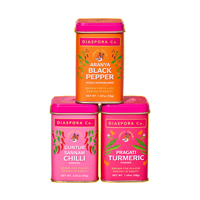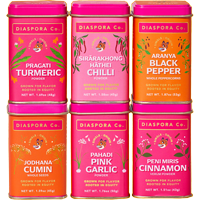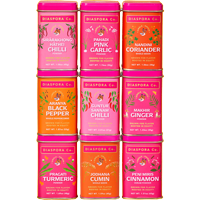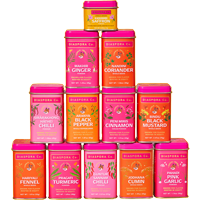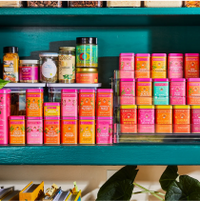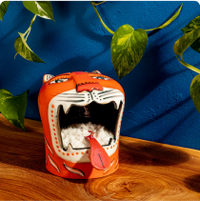
Excerpt from Food & Wine Magazine's "Diwali is a Festival of Sweet Delights" by Khushbu Shah, recipes by Hetal Vasaveda, November 2020.
Anytime around Diwali, you'll find golden, translucent, crispy, sticky, jewel-like jalebis in boxes stacked up high inside mithai shops and Indian grocery stores all around the world. Jalebi, a Persian-origin sweet that is popular in India, is a treat made from batter that’s drizzled into hot oil to deep-fry it, and then briefly soaked in a fragrant saffron- and cardamom-infused syrup. Typically, jalebi is made with a fermented batter, or attho, but in more modern times cooks have found a quick shortcut by using baking soda, eno (fruit salt), or lemons to acidify the batter. While making jalebi, the most important thing to keep in mind is to make sure the syrup is warm and to immediately drop the deep-friend jalebis from the oil into syrup so that the jalebis soak it all up. If the syrup is too hot or too cold, the jalebi will not absorb the syrup and you'll end up with soggy jalebis, which will still taste good but won't give you the crispy texture you want. I highly recommend eating them fresh—there truly is nothing like fresh jalebi right out of the syrup!
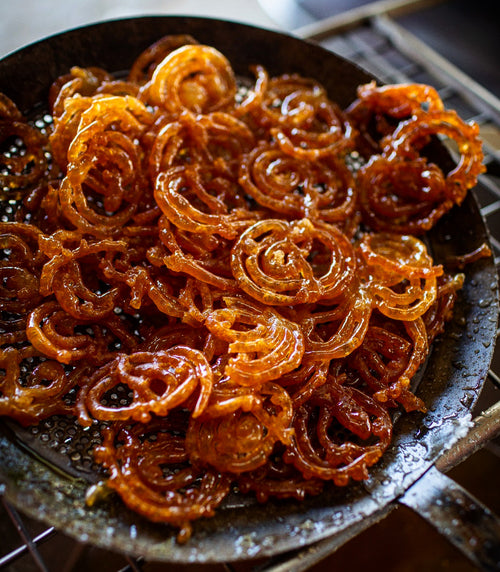
Hetal's Saffron Jalebi
Excerpt from Food & Wine Magazine's "Diwali is a Festival of Sweet Delights" by Khushbu Shah, recipes by Hetal Vasaveda, November 2020.
Anytime around Diwali, you'll find golden, translucent, crispy, sticky, jewel-like jalebis in boxes stacked up high inside mithai shops and Indian grocery stores all around the world. Jalebi, a Persian-origin sweet that is popular in India, is a treat made from batter that’s drizzled into hot oil to deep-fry it, and then briefly soaked in a fragrant saffron- and cardamom-infused syrup. Typically, jalebi is made with a fermented batter, or attho, but in more modern times cooks have found a quick shortcut by using baking soda, eno (fruit salt), or lemons to acidify the batter. While making jalebi, the most important thing to keep in mind is to make sure the syrup is warm and to immediately drop the deep-friend jalebis from the oil into syrup so that the jalebis soak it all up. If the syrup is too hot or too cold, the jalebi will not absorb the syrup and you'll end up with soggy jalebis, which will still taste good but won't give you the crispy texture you want. I highly recommend eating them fresh—there truly is nothing like fresh jalebi right out of the syrup!
Ingredients
For the Batter
- 3/4 cup plus 2 tablespoons (110 grams) all-purpose flour
- 5 teaspoons (10 grams) cornstarch
- 1/2 cup (113 g) water
- 1 tablespoon (17 g) plain full-fat yogurt
- 1/4 teaspoon baking soda
- Few drops orange food coloring (optional)
- Vegetable oil for frying
For the Syrup
- 2 cups granulated sugar
- 1 cup water
- 10-12 strands Kashmiri Saffron
- 1/4 teaspoon ground Baraka Cardamom
- 1 teaspoon teaspoon lemon juice
Methods
- Fill a large deep-sided or cast iron skillet with 2 inches of oil and heat over medium-low until it reaches 320°F. Lower the heat to maintain temperature until ready to use.
- While oil heats, make the jalebi batter: Whisk together flour and cornstarch in a small mixing bowl until well combined. Add water and yogurt and whisk until you have a silky smooth batter, about 3 minutes. Add baking soda and food coloring, if using, and whisk for another 2 minutes to fully combine. Set batter aside while you prepare the syrup.
- Make the jalebi syrup: Heat sugar, water, saffron, and cardamom in a medium saucepan over high until boiling. Reduce heat to medium-low and simmer, stirring often, until the syrup temperature reaches 220°F and the syrup attains “one-string” consistency, about 15 minutes. To check for one-string consistency: Dip a spoon into the syrup, let it cool for a few seconds, then rub a very tiny amount of syrup between your thumb and pointer finger and gently pull your fingers apart. If a single string of syrup is formed between your fingers when you pull them apart, then the syrup is done. Turn off the heat and let the syrup cool slightly on the warm stovetop, keeping it between 160°F and 170°F. Set a wire rack over a large rimmed baking sheet and place it alongside the stove.
- Fill a piping bag with the jalebi batter and snip off a small opening about 1/8-inch wide (or use a plastic squeeze bottle). Pipe the batter, with even pressure, into the hot oil in 3 to 4 concentric circles, with the largest circle measuring 3 to 4 inches wide, and then pipe a line through the circles to hold the jalebi together. Continue piping more jalebis until the pan is half filled. Fry the jalebi, flipping them over halfway through, until crisp, about 3 minutes. Using a pair of tongs, gently pick up each jalebi, shake off any excess oil, and immediately drop it into the saucepan of warm syrup and press down gently to submerge it for about 30 seconds. Remove the jalebi from the syrup with tongs, shake off any excess, and place on the wire rack to cool. Repeat frying and dunking the jalebis in syrup until all the batter is finished, reheating syrup if needed as you go. Transfer jalebi to a serving platter and serve warm or at room temperature.
